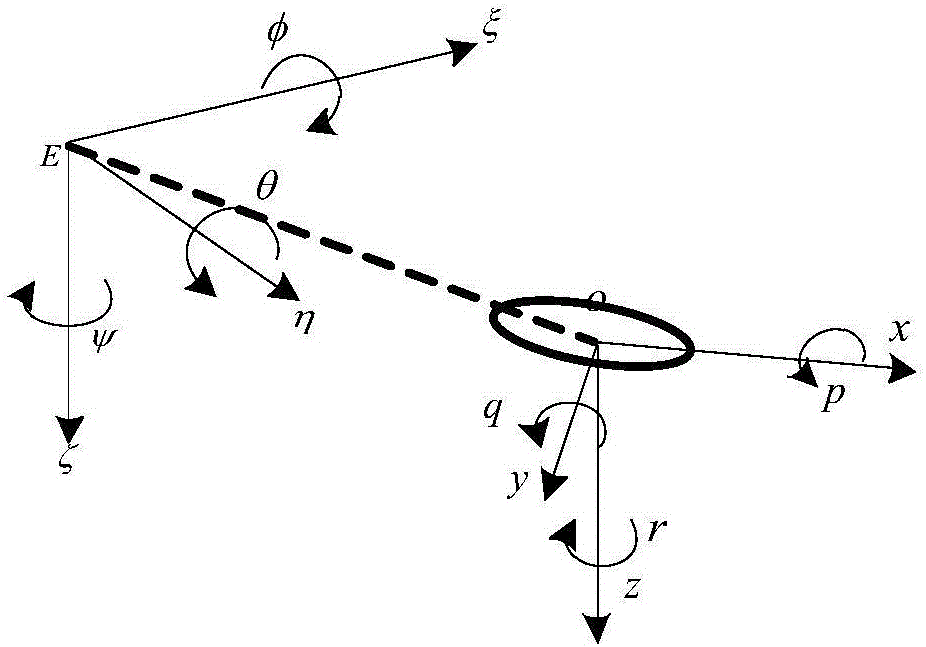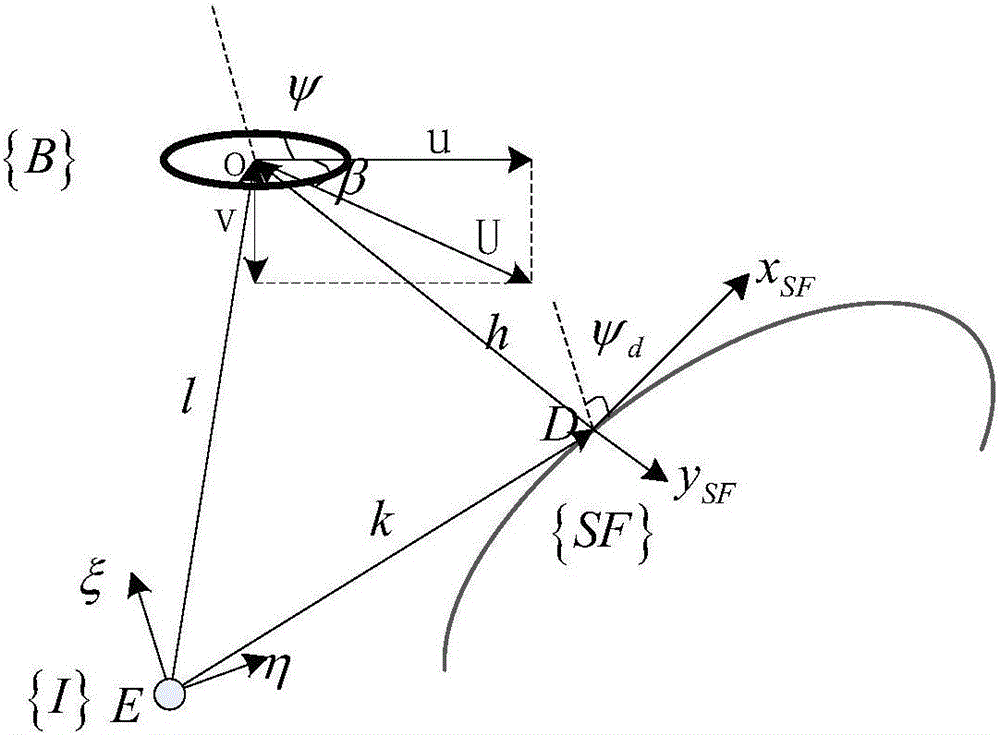UUV (Unmanned Underwater Vehicle) path tracking method based on self-adaption sliding-mode control
An adaptive sliding mode and path tracking technology, applied in adaptive control, general control system, control/regulation system, etc., can solve the problems of complex construction and slow implementation, achieve high control accuracy, reduce chattering, Small chattering effect
- Summary
- Abstract
- Description
- Claims
- Application Information
AI Technical Summary
Problems solved by technology
Method used
Image
Examples
specific Embodiment approach 1
[0035] Specific implementation mode one: combine Figure 4 , the UUV path tracking method based on adaptive sliding mode of the present invention, comprises the steps:
[0036] Step 1. Initialization:
[0037] is various adaptive parameters k of UUV i ,λ i (i=1,2,3) assign initial value, and determine its ideal speed u for the path following process d , define update times t=0;
[0038] Step 2. Obtain the current state of the UUV:
[0039] The current moment status is obtained through a series of sensors of the UUV itself: u, v are the longitudinal and lateral speeds (m / s), r are the yaw angular speeds (rad / s), and x, y are the UUV relative to the fixed coordinates position of the system (m), ψ is the yaw angle (rad), determine the longitudinal velocity error e u =u-u d ;
[0040] Step 3. Based on the Serret-Frenet coordinate system, establish the underactuated UUV horizontal plane error equation to obtain the position deviation x e ,y e and heading deviation ψ e ; ...
specific Embodiment approach 2
[0054] Embodiment 2: On the basis of Embodiment 1, based on the Serret-Frenet coordinate system described in step 3, the underactuated UUV horizontal plane error equation is established to obtain the position deviation x e ,y e and heading deviation ψ e The specific process is as follows:
[0055] For the movement of UUV in the horizontal plane, it is only necessary to establish a three-degree-of-freedom model, and the variables to be considered are: position x, y, heading angle ψ, longitudinal velocity u, lateral velocity v, and yaw angular velocity r. The kinematic equation of UUV horizontal plane can be obtained as:
[0056] x · = u c o s ψ - v s ...
specific Embodiment approach 3
[0089] Specific implementation mode three: on the basis of specific implementation mode one or two, utilize the sliding mode control method described in step 4 to design respectively the speed sliding mode control law, the position sliding mode control law and the bow angle sliding mode control law, by against thrust X prop , expected speed and torque N prop control so that u d →0,x e →0,ψ e →0 The specific process is as follows:
[0090] In order to design a controller designed for UUV path tracking, the present invention makes the following reasonable assumptions:
[0091] Assumption 1: The speed U of the UUV can be regarded as the longitudinal speed u of the UUV;
[0092] Hypothesis 2: Minimum speed u min and the maximum speed u max , so that u d ∈[u min , u max ],u max > u min >0;
[0093] On the basis of the above assumptions, the sliding mode control law of the UUV's speed tracking subsystem is firstly designed. For the first formula in (6), use
[009...
PUM
 Login to View More
Login to View More Abstract
Description
Claims
Application Information
 Login to View More
Login to View More - R&D
- Intellectual Property
- Life Sciences
- Materials
- Tech Scout
- Unparalleled Data Quality
- Higher Quality Content
- 60% Fewer Hallucinations
Browse by: Latest US Patents, China's latest patents, Technical Efficacy Thesaurus, Application Domain, Technology Topic, Popular Technical Reports.
© 2025 PatSnap. All rights reserved.Legal|Privacy policy|Modern Slavery Act Transparency Statement|Sitemap|About US| Contact US: help@patsnap.com



